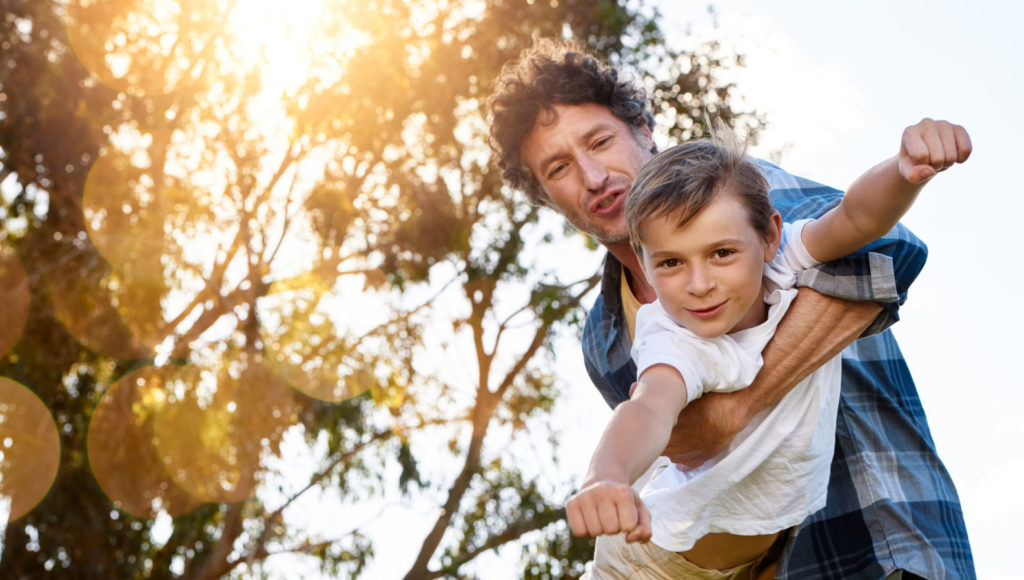The Right Kind of Hero

“Mom, can I have my own YouTube channel?” my eight-year-old daughter asked me one afternoon, as casually as if she were asking for a snack.
“What?” My eyes grew bigger. “Your own YouTube channel? Sweetheart, no.”
“But mom, lots of kids have them,” she responded in protest, going on to recite a few popular names from her favorite YouTube channels, families who travel all over the world or do fun challenges in their backyards, or girls that are similar ages who do, indeed, have their own channels.
“What would you do with your own YouTube channel?” I asked.
“I don’t know, talk about things, sing a few songs, show people how to do crafts.”
“Well honey,” I smiled back at her, “If those are your passions you will have to find a way to do them face to face with your friends for now because we are not starting a YouTube channel.”
“I thought you would say that,” she said back, leaving the room and our quick conversation unsurprised at my answer.
When did she start thinking she was capable of having her own internet channel? I thought to myself. I had let her watch a few family-friendly channels before, and together we took in videos of an adorable family snorkeling with the fish in Australia, and another family determined to stay on their backyard trampoline for a full 24 hours. We’ve had lots of conversations about the dangers of the internet, and she’s always been very receptive to the boundaries we have when it comes to her use and supervision there. But her own channel? While I can only smile at her show of confidence, in that conversation I realized how quickly a child can go from “this is fun to watch” to “I bet I can do that”—and it gave me the conviction I needed to make sure I was doing all I could to put a different kind of hero in her line of vision.
A Change in Focus
In hindsight, I should not have been surprised at my daughter’s question. A 2017 study found that nearly 75% of children ages 6-17, when asked about their future career aspirations, answered that they wanted to be some kind of social media star—a YouTuber, blogger or vlogger, or pop star. That’s telling data, and I had to admit it appeared to be true in my own home. And while I know that a child’s career choice is ultimately not up to or dependent on parents, I knew I could do at least one thing to ensure she had a bigger picture of influence than what the internet would show her; I could put a different kind of hero in front of her, the people who saw their lives with one clear vision: from God, and for God.
I set out to find new resources and creative ways to talk to my children about the missionaries, servant-leaders, and other ordinary people that God has used in extraordinary ways. We found children’s biographies on people like Amy Carmicheal, Jim and Elisabeth Elliot, George Washington Carver, Gladys Aylward, and George Mueller. We watched movies, learned about the historical period in which they lived, and talked about the grand adventure God took them on—from war zones in foreign countries to the jungles of South America to plantations in the southern United States—and the ways he performed miracles and gave supernatural provision every step of the way.
As we spent more and more time immersed in these stories, I saw my kids beginning to see them as far more fascinating than the YouTube content. I heard my daughter talking about these heroes with her friends and grandparents, showing them on maps the places we had learned about and what God had done there; and I watched as my five-year-old son retold the story of George Mueller and his orphanage being out of milk and food and gathering the children to pray when a knock at the door and a milkman’s delivery cart gave them an immediate and miraculous answer.
A Change in Aspiration
And then one day, when I picked my daughter up after a morning of playing at a friend’s house, my friend told me that when she went to check on our girls, she found them playing with dolls and Barbies—except they weren’t immersed in some grand and dramatic scene in the dream house or by the hotel pool; these Barbie dolls were missionaries, braving dangerous places to tell people about a good God.
I know that the world is going to continue to offer glitzy entertainment and quick hits of affirmation to my children, promising far more than the slow, mostly-overlooked work of humble missionary or service life. I know, because I am not above the desire to want the former things myself. But I also have seen the response when they have a different kind of hero to look at; how when they hear of the miraculously answered prayers in the lives of real men and women, they want to pray big prayers, too.
The Best Story Wins
John Qunicy Adams has famously said, “Whoever tells the best story wins.” As followers of Christ, we have the best story. It’s one of a world intended for perfect fellowship, broken by sin and selfishness, and saved by a humble King. It’s the only story of real hope the world will ever have, and the layers of adventures within that narrative are endless. When we share the stories of the brave men and women who risked everything to tell others about this hope, who took leaps of faith and were caught by the miraculous hands of God, who withstood hardship and counted everything as loss compared to the surpassing worth of knowing Christ, we give them the chance to go from “this is a great story” to “I bet I could do that.”